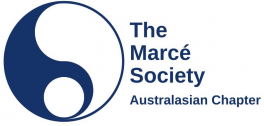Parent-infant relationships and postnatal depression
POSTNATAL DEPRESSION AND RISK OF HARM TO THE INFANT
Catherine Hapgood, North Shore Hospital, Takapuna, Auckland, New Zealand
An audit of referrals over a 2 month period revealed that 12% of women with a diagnosis of major depression had physically hurt their infants. A further 22% had had thoughts of harming their babies. This presentation reviews:
- Rates of harming infants in a non-clinical population
- Rates of harm to infants and thoughts of harming infants in a larger smmaple from Maternal Mental Health Referrals
- The implications of this data in management
- The disorders mother/infant relationship and its recognition.
PROMOTING MATERNAL INFANT ATTACHMENT IN HIGHLY VULNERABLE FAMILIES: A RANDOMISED CONTROLLED TRIAL
Ken Armstrong, J Fraser, M Dadds, J Morris
Child Community Health, Fortitude Valley, Brisbane, QLD
A significant subgroup of Australian children are exposed to a range of poor health outcomes as a result of the environment and family into which they are born. Deleterious influences relating to parental and partnership factors (history of childhood abuse, psychiatric illness, substance and alcohol abuse, ambivalence to the birth, sole parenthood, educational disadvantages, domestic violence) and environmental factors (low income, financial strain, social isolation) predispose the newborn to significantly increased risk of inappropriate nutrition (failure to thrive, obesity), vaccine preventable disease, inadequate breastfeeding, sudden infant death syndrome, accidental injury, developmental delay and child abuse or neglect.
Hypothesis: Provision of a home-based intervention program to families with high level vulnerability following the birth of a newborn will ameliorate and minimise the poor health outcomes to which their infants are predisposed. By focusing on improvement of maternal infant attachment and maternal self esteem, long term benefits to the infant and family should ensue.
Method: Families from the main maternity hospital in Brisbane were recruited immediately after the birth of their newborn on the basis of a questionnaire completed by the mother and highlighting family vulnerability factors. The questionnaire was trialed and validated prior to the commencement of the project. Families with high level vulnerability who consented to participate were randomly assigned to intervention or control groups. The intervention consists of a program of home-based child health nurse visits. The nurse intervention focused on the development of a trusting alliance, parent empowerment, anticipatory guidance and health promotion modelling, promotion of attachment, and positive reinforcement of parental child success. The nurse home visitors are supported by a team consisting of a social worker, paediatrician and a small group of parent aides (volunteers). The control group are encouraged to access local Community Child Health Services. Regular outcomes evaluation is undertaken by an independent researcher blinded to the families intervention status. Data is collected at inception, 6 weeks, 4 months, 7 moths, 12 months and 2 years.
Results: A total of 181 families have been enrolled (91 intervention: 90 control). The questionnaire approach to vulnerability, assessment in the immediate postnatal period is acceptable to the general population and home visiting by Child Health Nurses is welcomed. Comparison of consenting and non-consenting families reveals significant differences in vulnerability factors with those families with greater vulnerability being more likely to consent to participation in the project and to allow home visiting. At 6 weeks, statistically significant differences exist between groups relating to maternal and infant attachment (Parental Stress Index, HOME Inventory), maternal distress/ depression (PSI, EPDS) and client satisfaction with Community Child Health Service. The intervention group had better and more secure attachment with their infants and mothers had less distress and were enjoying the parenting role more than the control group. There was minimal loss of families receiving home visits (<1%).
Conclusion: This form of homebased intervention is acceptable to a targeted population of vulnerable families. The significant differences which have emerged at 6 weeks in attachment variables and maternal mood predict improved outcomes for infants and families in the intervention group. These differences are further confirmed by preliminary analysis of 4 month data. The model of targeted, homebased, multidisciplinary service delivery may provide significant direction for Community Child Health Services in this country.
PARENTAL ADJUSTMENT AND THE PARENT-CHILD RELATIONSHIP IN FAMILIES CONCEIVING THROUGH IVF FROM 30 WEEKS OF PREGNANCY TO 4 MONTHS POSTPARTUM
Catherine McMahon, J Ungerer, C Tennant, D Saunders
Dept of Psychological Medicine, Royal North Shore Hospital, St Leonards, NSW
Objectives: This study compares couples who have conceived by IVF with matched controls on psychosocial well-being and the quality of the parent-child relationship.
Methods: 70 IVF couples and 63 matched controls completed self-report questionnaires at 30 weeks of pregnancy and at 4 months postpartum. In addition, mothers were interviewed on both occasions and at 4 months mothers and babies were videotaped using the Still-Face Procedure (Cohn & Tronick, 1983). Infant behaviour and maternal sensitivity were rated by trained coders blind to IVF status.
Results: In pregnancy, IVF mothers showed a more external locus of control (p=.003), higher anxiety about the pregnancy outcome (p=.000), more positive identification with pregnancy (p=.001), and engaged in less active preparation for childbirth and parenting (p=.011). They did not differ on reported attachment to their unborn baby. Postnatally, IVF mothers did not differ from control mothers on state anxiety, postnatal depression, marital satisfaction, or the utilisation of support services for mothers and babies. However, they reported lower self-esteem (p=.023) and lower maternal self-efficacy (p=.01). Results for fathers on comparable self-report measures during pregnancy and at four months postpartum will also be presented. Although IVF mothers did not differ from control mothers on reported attachment or maternal separation anxiety, they differed in reporting their infants to be more temperamentally difficult (p=0.17). The videotapes revealed no group differences for maternal behaviours, but the IVF babies displayed significantly more negative behaviours in response to an interactive stress (p=.024).
Conclusions: Overall, the results are reassuring for IVF parents. However, specific adjustment measures reveal some early difficulties and suggest IVF mothers may benefit from more support during pregnancy and the early postpartum months. Implications of findings of paternal adjustment will be included in the discussion.
PARENT AND CHILD ADJUSTMENT AND THE QUALITY OF RELATIONSHIP AT 12 MONTHS POSTPARTUM FOR FAMILIES CONCEIVING THROUGH IVF
Frances Gibson, J Ungerer, G Leslie, D Saunders, C Tennant
Dept of Neonatology, Royal North Shore Hospital, St Leonards, NSW
Objectives: This study evaluates parent and child adjustment and the quality of the parent-child relationship, at 12 months postpartum, for families who have conceived through IVF.
Methods: 70 primiparous couples and their singleton infants conceived through IVF and 63 matched controls were recruited during pregnancy. Parent adjustment was evaluated through self-report measures. In addition, mothers attended an interview and infant development was assessed. Child adjustment was evaluated by the examiner completed Bayley Behaviour Rating Scales (BRS) and through a maternal completed behaviour completed behaviour checklist and temperament scale. The quality of the parent-child relationship was measured through parent completed questionnaires and mothers and babies were videotaped using the Strange Situation, to evaluate security of attachment (Ainsworth, 1978).
Results: There were no group differences in maternal adjustment nor on the examiner completed BRS, reflecting child adjustment. IVF mothers, however, reported more child behaviour problems (p=.013) and, while mean temperament scores were in the normal community range, they rated their infants higher on reactivity than control mothers rated their infants (p=.002). On self report measures, there were no group differences in the quality of the mother-child relationship and initial analyses of observational data show that 66% of 44 IVF infants and 55% of 47 controls demonstrate secure attachment relationships. Results on self report measures of paternal adjustment and the father-child relationship will also be presented.
Conclusions: At 12 months postpartum, IVF mothers' adjustment is comparable to other first time mothers of a similar age. While they report more behaviour difficulty and reactivity in their infants than control mothers, these differences are not reflected in observed behaviour during assessment nor in the quality of the attachment relationship. Results indicate that IVF mothers may benefit from reassurance, concerning both their own positive adjustment to parenthood and the emotional adjustment of their children during the first year. Implications from results of paternal data will also be discussed.





